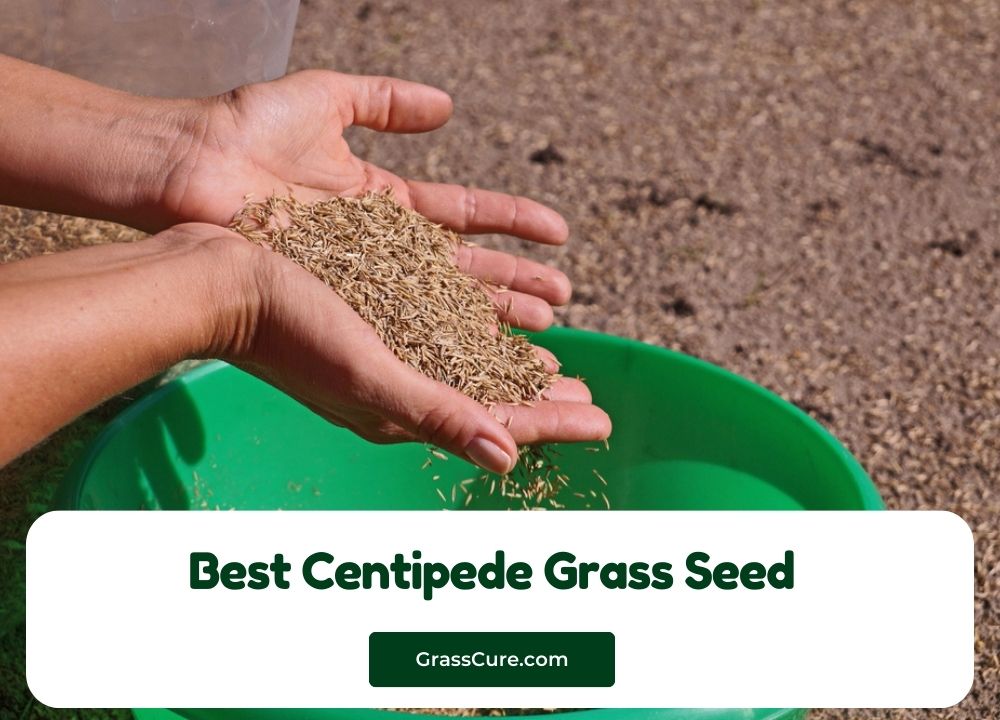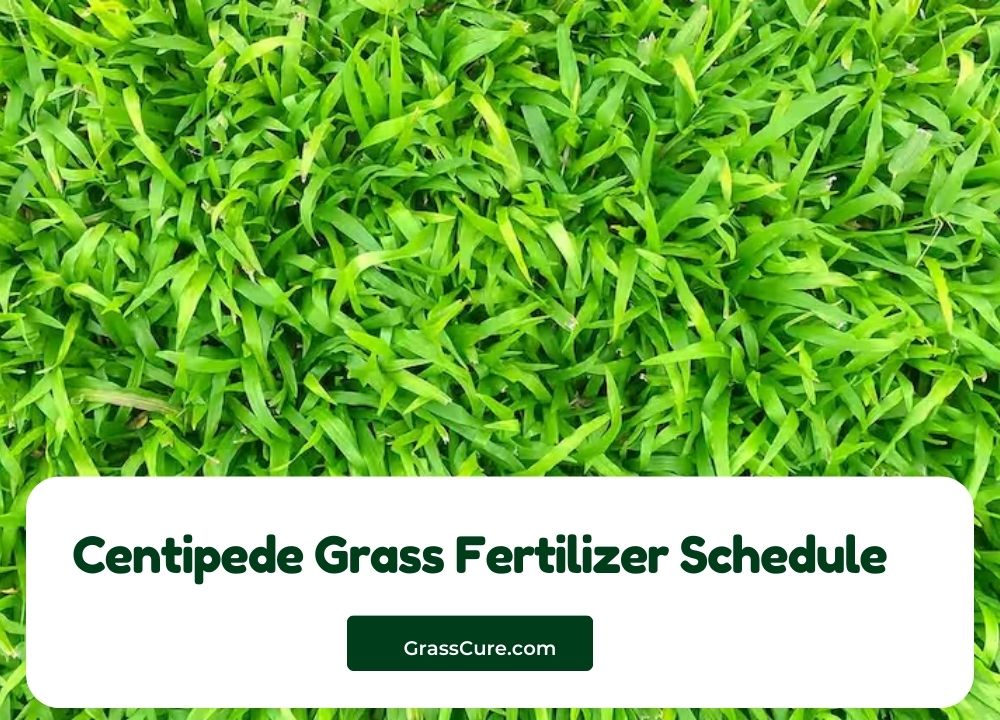Centipede grass is a popular choice for lawns in warm climates due to its low maintenance and attractive appearance. Known for its thick, lush green blades and ability to thrive in sandy soils, this warm-season grass offers a beautiful backdrop for outdoor spaces. However, to ensure a healthy, vibrant lawn, proper care is essential. In this guide, we will explore the best practices for planting, watering, mowing, fertilizing, and maintaining centipede grass, helping you create a thriving lawn that you can enjoy for years to come.
How To Care For Centipede Grass Step By Step guide
Understanding Centipede Grass
Centipede grass (Eremochloa ophiuroides) is a warm-season grass that is cherished for its unique growth habits and aesthetic appeal. Here’s what you need to know:
Characteristics and Appearance
- Growth Habit: Centipede grass is a creeping perennial that spreads through above-ground stolons, creating a dense, carpet-like lawn. Its growth is slower compared to other grasses, which can be beneficial for those seeking low-maintenance options.
- Color and Texture: This grass has a medium to light green color and a fine to medium texture, making it visually appealing while still being tough enough to withstand moderate foot traffic.
Ideal Growing Conditions
- Climate: Centipede grass thrives in warm, humid climates, particularly in the southeastern United States. It prefers temperatures between 75°F and 95°F (24°C to 35°C).
- Soil Preferences: This grass type grows best in acidic soils with a pH of 5.0 to 6.0. It adapts well to sandy or loamy soils but may struggle in heavy clay or poorly drained areas.
Understanding these key characteristics and ideal conditions will help you successfully cultivate and care for centipede grass, ensuring a lush and healthy lawn.
Planting Centipede Grass
Planting centipede grass requires careful planning and execution to ensure a lush, healthy lawn. Here’s a step-by-step guide to help you successfully establish centipede grass in your yard:
Best Time to Plant
- Timing: The ideal time to plant centipede grass is in late spring to early summer when soil temperatures consistently reach 65°F (18°C) or higher. This timing allows the grass to establish before the heat of summer.
Methods of Planting
- Seeding:
- Choosing Seeds: Select high-quality centipede grass seeds from a reputable supplier.
- Preparation: Rake the soil to create a smooth, level surface and remove debris. If necessary, amend the soil to achieve the right pH and nutrient levels.
- Seeding: Use a broadcast spreader to evenly distribute seeds at a rate of 1 to 2 pounds per 1,000 square feet. Lightly rake the area again to ensure the seeds make contact with the soil.
- Sodding:
- Choosing Sod: Purchase fresh centipede grass sod rolls from a local nursery or garden center.
- Preparation: Prepare the soil as described above, ensuring a smooth and level surface.
- Laying Sod: Lay the sod in a staggered pattern, similar to brickwork, to prevent visible seams. Press the edges of the sod pieces together to eliminate gaps.
Watering Immediately After Planting
Initial Watering: After seeding or laying sod, water the area thoroughly to promote seed germination and sod establishment. Aim for about 1 inch of water per week, adjusting based on weather conditions.
Continued Care: Keep the soil consistently moist (but not soggy) until the grass is established, which typically takes about 14 to 21 days for seeds and slightly longer for sod.
Watering Requirements for Centipede Grass
Proper watering is crucial for the health and vitality of centipede grass. Here’s what you need to know to ensure your lawn receives the right amount of moisture:
Importance of Consistent Moisture
Centipede grass thrives in warm, humid conditions, but it still requires consistent moisture to establish deep roots and maintain its vibrant color. Adequate watering helps prevent stress during hot, dry periods and promotes healthy growth.
Recommended Watering Schedule
- Frequency:
- For newly seeded lawns, water daily to keep the soil consistently moist until the grass is established (about 2-3 weeks). After establishment, reduce the frequency to 2-3 times per week.
- For established centipede grass, water once a week, providing about 1 inch of water during each session. Adjust the frequency based on rainfall and local weather conditions.
- Amount: Aim for about 1 inch of water per week, either from rainfall or supplemental irrigation. This amount encourages deep root growth, which helps the grass withstand periods of drought.
Signs of Overwatering or Underwatering
- Overwatering:
- Yellowing or browning grass tips
- Soil that feels soggy or waterlogged
- Increased weed growth or fungal issues
- Underwatering:
- Wilting or curling grass blades
- Dry, brown patches in the lawn
- Thinning or patchy growth
Mowing Techniques for Centipede Grass
Proper mowing techniques are essential for maintaining the health and appearance of centipede grass. Here are some key tips to ensure your lawn stays lush and vibrant:
When to Mow
- Timing: Mow centipede grass when it reaches a height of about 3 to 4 inches. This typically occurs every 7 to 14 days during the growing season, depending on growth rates and environmental conditions. Avoid mowing when the grass is wet to prevent damage.
Ideal Mowing Height
- Recommended Height: The ideal mowing height for centipede grass is between 1.5 to 2.5 inches. Mowing within this range helps maintain a thick lawn and encourages healthy growth. Keeping the grass too short can lead to stress and make it more susceptible to weeds and pests.
Mowing Tips for Healthy Growth
- Sharp Blades: Always use sharp mower blades to ensure a clean cut. Dull blades can tear the grass, leading to increased stress and vulnerability to disease.
- Mow High: When in doubt, it’s better to mow slightly higher. Taller grass blades have deeper roots and can better tolerate heat and drought.
- Alternate Mowing Patterns: Change your mowing pattern each time you mow to prevent soil compaction and encourage upright growth. This practice helps the grass develop a more robust root system.
- Leave Clippings: If the grass is not too long, consider leaving grass clippings on the lawn after mowing. This practice can return nutrients to the soil and promote healthier growth.
Fertilization for Centipede Grass
Proper fertilization is essential for maintaining the health and vigor of centipede grass. Here’s a guide on how to effectively nourish your lawn:
Nutritional Needs of Centipede Grass
Centipede grass has relatively low nutrient requirements compared to other grass types. However, it benefits from balanced fertilization, particularly nitrogen, phosphorus, and potassium, to promote healthy growth and color.
Recommended Fertilizers
- Type of Fertilizers:
- Use a slow-release fertilizer specifically formulated for centipede grass or warm-season grasses. A balanced fertilizer with an N-P-K ratio of approximately 15-0-15 is ideal.
- Application Rate:
- Apply about 1 pound of nitrogen per 1,000 square feet of lawn annually. Follow the specific product’s instructions for application rates.
Timing of Fertilization
- Spring Application: The primary fertilization should occur in late spring (around May) when the grass begins to actively grow. This timing supports robust growth during the summer months.
- Fall Application: A light application in early fall (around September) can help prepare the grass for winter, but avoid fertilizing too late to prevent growth that could be damaged by cold weather.
Tips for Effective Fertilization
- Soil Testing: Before applying fertilizer, consider conducting a soil test to determine nutrient levels and pH. This information will help you make informed decisions about amendments and fertilizers.
- Watering After Application: Water the lawn lightly after fertilization to help the nutrients penetrate the soil and reach the roots.
- Avoid Over-fertilization: Centipede grass is sensitive to excessive nitrogen. Over-fertilizing can lead to excessive growth, increased susceptibility to pests, and a decline in overall lawn health.
Weed and Pest Control for Centipede Grass
Maintaining a healthy centipede grass lawn requires proactive measures to manage weeds and pests. Here’s a comprehensive guide to effective weed and pest control:
Common Weeds Affecting Centipede Grass
- Types of Weeds:
- Broadleaf Weeds: Dandelions, clover, and chickweed can invade centipede grass, competing for nutrients and water.
- Grassy Weeds: Crabgrass and goosegrass may establish themselves in your lawn if not properly managed.
Prevention and Control Methods
- Cultural Practices:
- Mowing: Regular mowing at the recommended height (1.5 to 2.5 inches) can prevent weeds from flowering and seeding.
- Healthy Lawn Care: Proper watering, fertilization, and aeration promote dense grass growth, which naturally suppresses weed establishment.
- Pre-emergent Herbicides:
- Apply pre-emergent herbicides in early spring before weed seeds germinate. Look for products labeled safe for centipede grass to avoid damage.
- Post-emergent Herbicides:
- For existing weeds, use a post-emergent herbicide targeted at broadleaf weeds. Ensure it’s suitable for centipede grass to prevent injury.
Common Pests Affecting Centipede Grass
- Types of Pests:
- Grubs: These larvae of beetles can damage grass roots, leading to brown patches.
- Chinch Bugs: Small pests that suck the sap from grass blades, causing yellowing and wilting.
- Armyworms: Caterpillars that can quickly strip grass of its foliage.
Identification and Treatment Options
- Monitoring: Regularly inspect your lawn for signs of pests, such as discoloration, wilting, or bare patches.
- Insecticidal Treatments: Use insecticides specifically formulated for the pests affecting centipede grass. Follow the manufacturer’s instructions carefully for application rates and safety measures.
Integrated Pest Management (IPM)
- Combining Strategies: Employ a mix of cultural practices, biological controls, and targeted treatments to manage pests sustainably. Encourage beneficial insects, such as ladybugs, that can help control pest populations.
Seasonal Care Tips for Centipede Grass
Caring for centipede grass throughout the year involves specific practices tailored to each season. Here are essential seasonal care tips to ensure your lawn remains healthy and vibrant:
Spring Care Tips
- Fertilization: Apply a slow-release nitrogen fertilizer in late spring (around May) to support growth as the grass comes out of dormancy.
- Weed Control: Use pre-emergent herbicides to prevent summer weeds. Also, spot-treat any existing weeds with post-emergent herbicides, ensuring they are safe for centipede grass.
- Mowing: Begin mowing as the grass starts growing actively, maintaining the recommended height of 1.5 to 2.5 inches.
Summer Maintenance
- Watering: Ensure the lawn receives about 1 inch of water per week, either through rainfall or irrigation. Water deeply and infrequently to encourage deep root growth.
- Pest Monitoring: Keep an eye out for common pests like grubs and chinch bugs. Treat infestations promptly with appropriate insecticides.
- Aeration: If your lawn shows signs of compaction, consider aerating it in mid to late summer to improve airflow and water absorption.
Fall Preparations
- Fertilization: Apply a light application of fertilizer in early fall (around September) to prepare the grass for winter. Avoid fertilizing too late to prevent new growth that could be damaged by cold.
- Mowing: Continue mowing until growth slows, lowering the mower height slightly as temperatures drop to prevent winter disease.
- Weed Control: Address any weeds that may have emerged during the summer. Apply post-emergent herbicides if necessary.
Winter Care
- Mowing: If the grass remains green and continues to grow, mow as needed, but avoid cutting it too short. In colder climates, you may let the grass go dormant.
- Debris Cleanup: Keep the lawn clear of leaves and debris to prevent mold and disease development during winter.
- Monitoring: Check for signs of winter damage or pests, and take necessary steps to address any issues before spring arrives.
Troubleshooting Common Issues with Centipede Grass
Despite proper care, centipede grass may experience various issues that affect its health and appearance. Here’s how to identify and address common problems:
1. Yellowing Grass
- Possible Causes:
- Nutrient deficiencies (particularly nitrogen)
- Overwatering or poor drainage
- Pests, such as chinch bugs or grubs
- Solutions:
- Nutrient Check: Conduct a soil test to determine nutrient levels and amend accordingly. Apply a balanced fertilizer in late spring to address deficiencies.
- Water Management: Adjust your watering schedule to ensure proper drainage and avoid soggy soil. Aim for deep, infrequent watering.
- Pest Control: Inspect for signs of pests and treat infestations with appropriate insecticides.
2. Patchy Growth
- Possible Causes:
- Inconsistent watering
- Poor soil conditions
- Compaction or heavy foot traffic
- Solutions:
- Watering Consistency: Ensure the lawn receives consistent moisture. Adjust your watering practices if certain areas appear dry or under-watered.
- Soil Improvement: Conduct a soil test to identify pH and nutrient issues. Amend the soil as needed to create a healthier growing environment.
- Aeration: Aerate compacted areas to improve airflow, water absorption, and root development.
3. Thinning Grass
- Possible Causes:
- Inadequate fertilization
- Over-mowing or mowing too low
- Pest damage
- Solutions:
- Fertilization: Apply a slow-release fertilizer in late spring to promote healthy growth. Follow application guidelines based on soil test results.
- Mowing Practices: Ensure you’re mowing at the recommended height (1.5 to 2.5 inches). Adjust your mowing frequency to avoid cutting the grass too short.
- Pest Management: Monitor for pests and treat infestations promptly to prevent further damage.
4. Weeds
- Possible Causes:
- Lack of competition from healthy grass
- Improper mowing or watering practices
- Solutions:
- Cultural Practices: Maintain a dense, healthy lawn through proper fertilization and watering, which can help suppress weed growth.
- Herbicide Application: Use pre-emergent herbicides in spring to prevent weed seeds from germinating. For existing weeds, apply post-emergent herbicides labeled safe for centipede grass.
5. Winter Damage
- Possible Causes:
- Frost damage from late cold snaps
- Snow mold due to moisture trapped by snow
- Solutions:
- Monitoring: Keep an eye on weather forecasts and prepare to cover your lawn if a late frost is predicted.
- Debris Cleanup: Remove leaves and debris from the lawn before winter to minimize the risk of snow mold. Ensure good airflow to reduce moisture buildup.
Conclusion
Caring for centipede grass can lead to a stunning, low-maintenance lawn that thrives in warm climates. By understanding its unique characteristics and needs, you can create the ideal environment for this beautiful grass to flourish. From proper planting and watering to mowing, fertilization, and effective weed and pest control, each aspect of lawn care plays a crucial role in maintaining the health and vibrancy of your centipede grass.
As the seasons change, adapting your care routine will ensure your lawn remains lush and resilient. By troubleshooting common issues promptly and employing best practices, you can enjoy a vibrant outdoor space that enhances your home’s curb appeal. Embrace the journey of cultivating centipede grass, and you’ll be rewarded with a beautiful, thriving lawn for years to come. Happy gardening!
Additional Resources
To further enhance your knowledge and care for centipede grass, consider exploring the following resources:
- Books:
- “The Lawn Care Manual” by Nick Christians – A comprehensive guide on lawn care, including grass types, fertilization, and pest management.
- “Southern Living Garden Book” – Offers regional gardening advice, including tips for growing warm-season grasses like centipede grass.
- Online Articles and Guides:
- University Extension Services: Many universities offer extension services with detailed guides on centipede grass care. Look for resources from institutions like:
- University of Georgia Cooperative Extension
- North Carolina State University Extension
- Clemson University Extension
- Home Improvement Websites: Sites like Home Depot or Lowe’s provide articles and guides on lawn care, including centipede grass.
- University Extension Services: Many universities offer extension services with detailed guides on centipede grass care. Look for resources from institutions like:
- Gardening Forums and Communities:
- GardenWeb Forums: Engage with fellow gardeners to share experiences, ask questions, and learn more about centipede grass care.
- Reddit – r/gardening: A community where you can find advice, tips, and shared experiences from other lawn enthusiasts.
- YouTube Channels:
- Channels like The Lawn Care Nut and Purdue Extension offer visual demonstrations on lawn care techniques, including mowing, fertilizing, and pest management.
- Local Nurseries and Garden Centers:
- Consult with local experts for personalized advice on centipede grass care specific to your region. They can recommend suitable products and provide insights based on local conditions.






